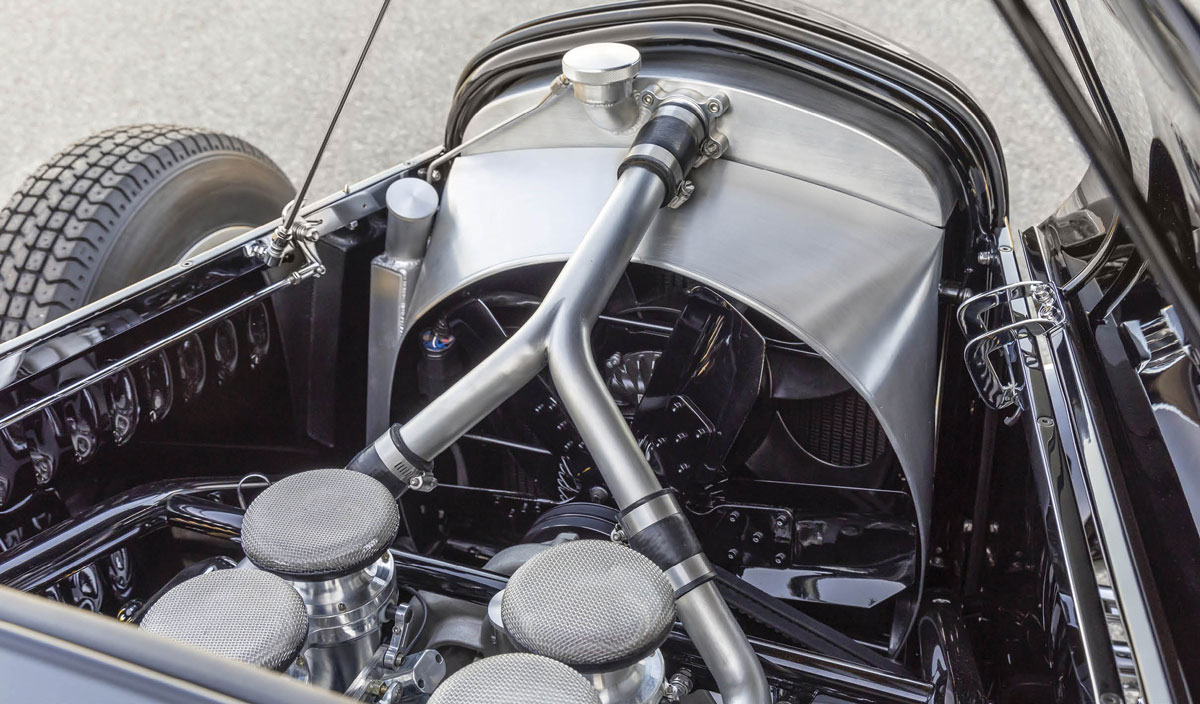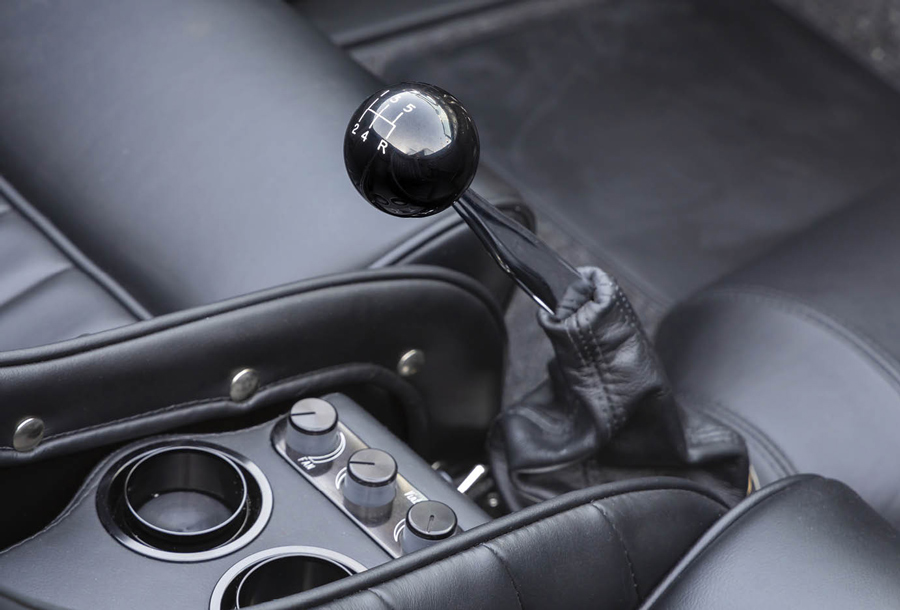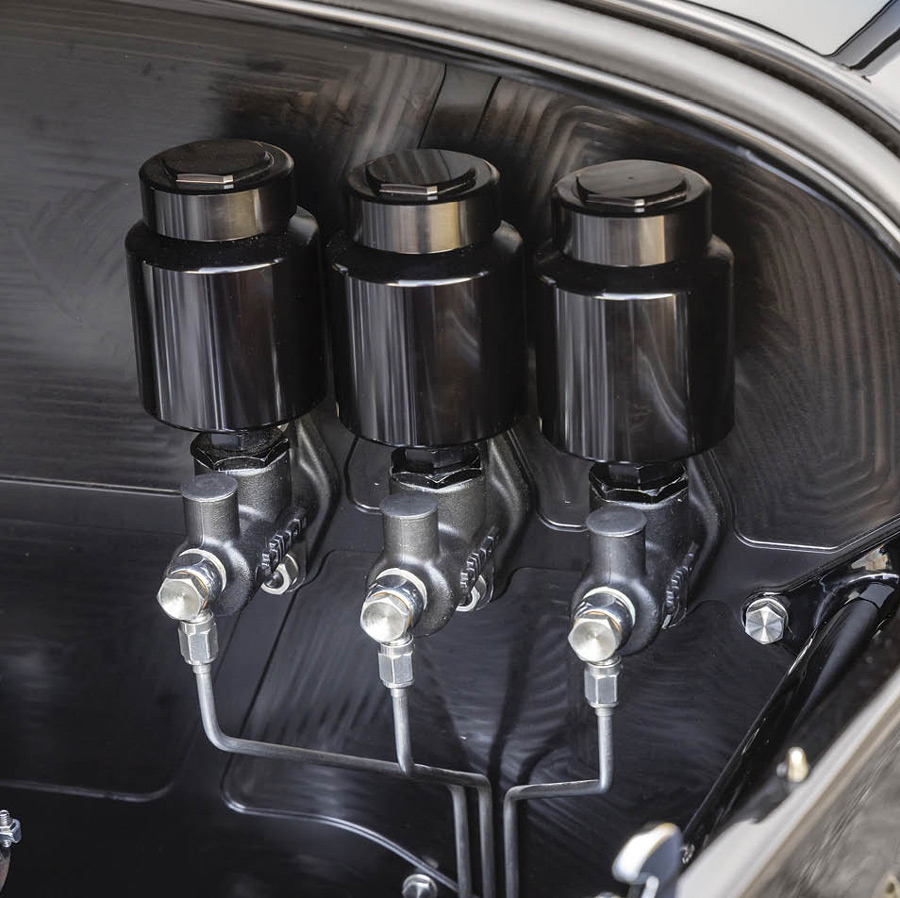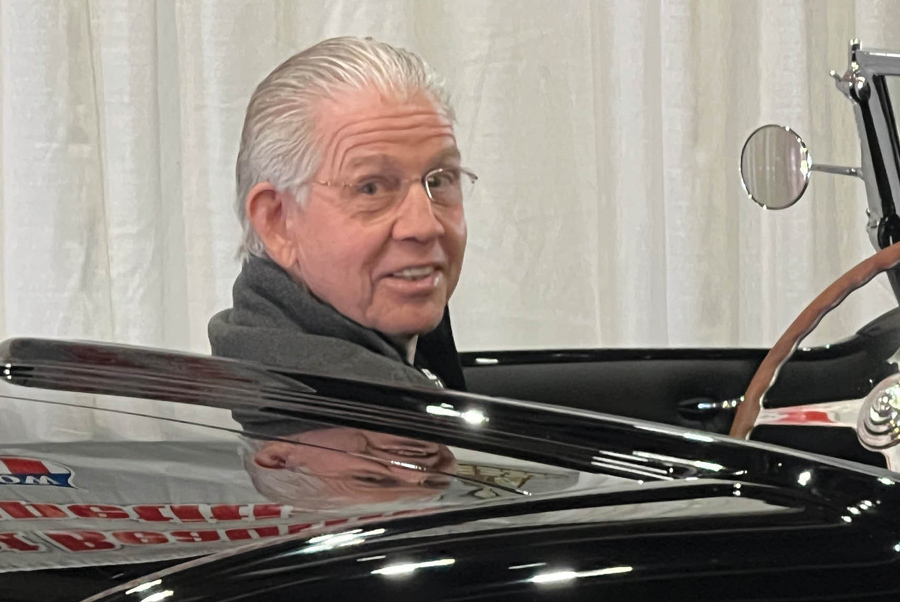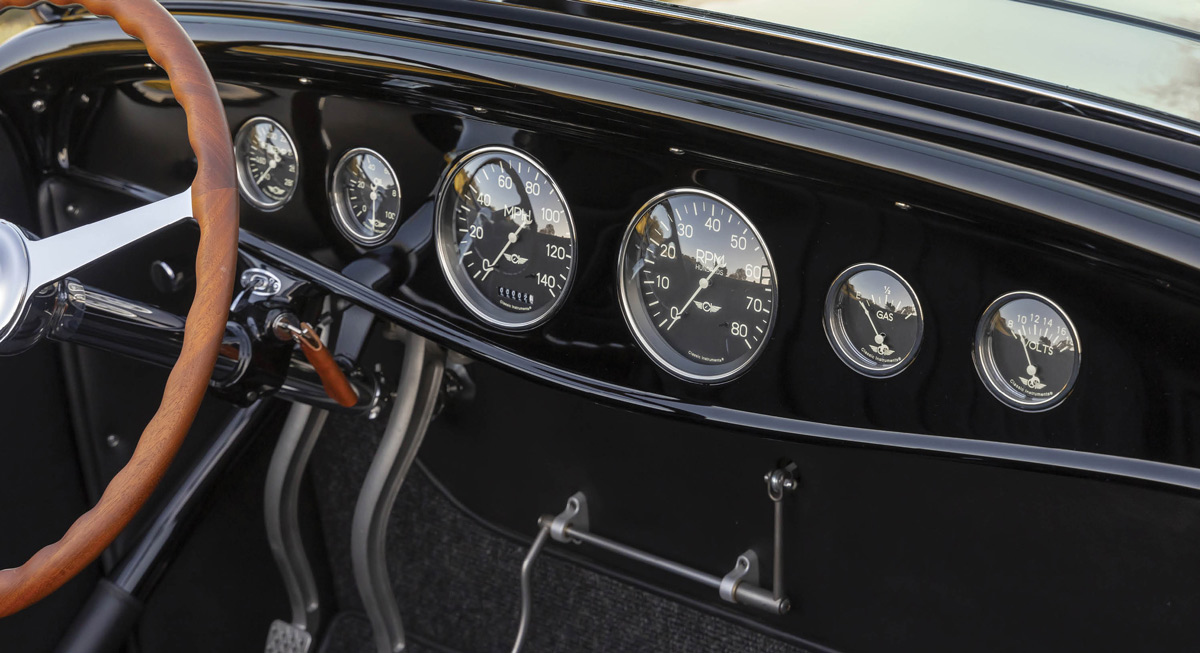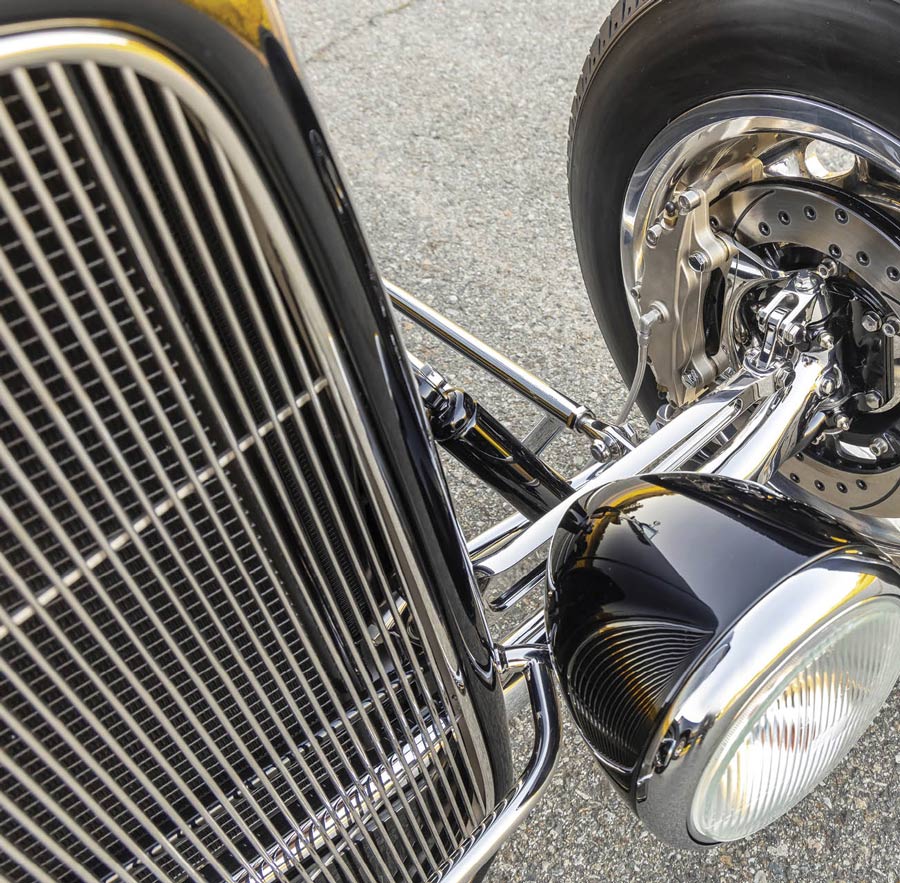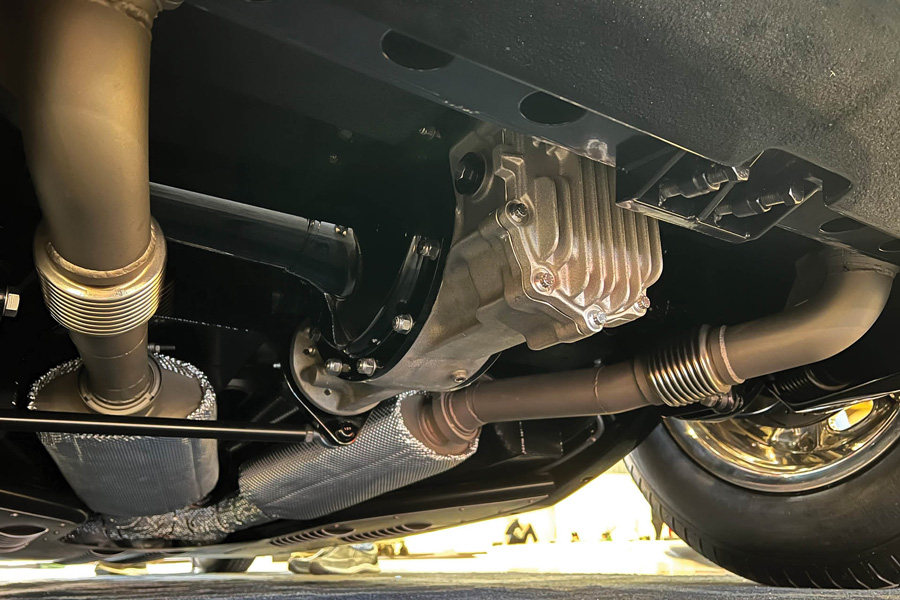
 Photography by Wes Allison
Photography by Wes Allison VIDEOGRAPHY by RYAN FOSS
VIDEOGRAPHY by RYAN FOSShere was a time when hot rods and race cars were built in home shops. Many older rodders remember these days as the “glory days” of rodding and racing. There will be doubters but this ’32 Ford highboy roadster, which took home the 2023 America’s Most Beautiful Roadster trophy, is, in a manner of speaking, a home shop–built hot rod.
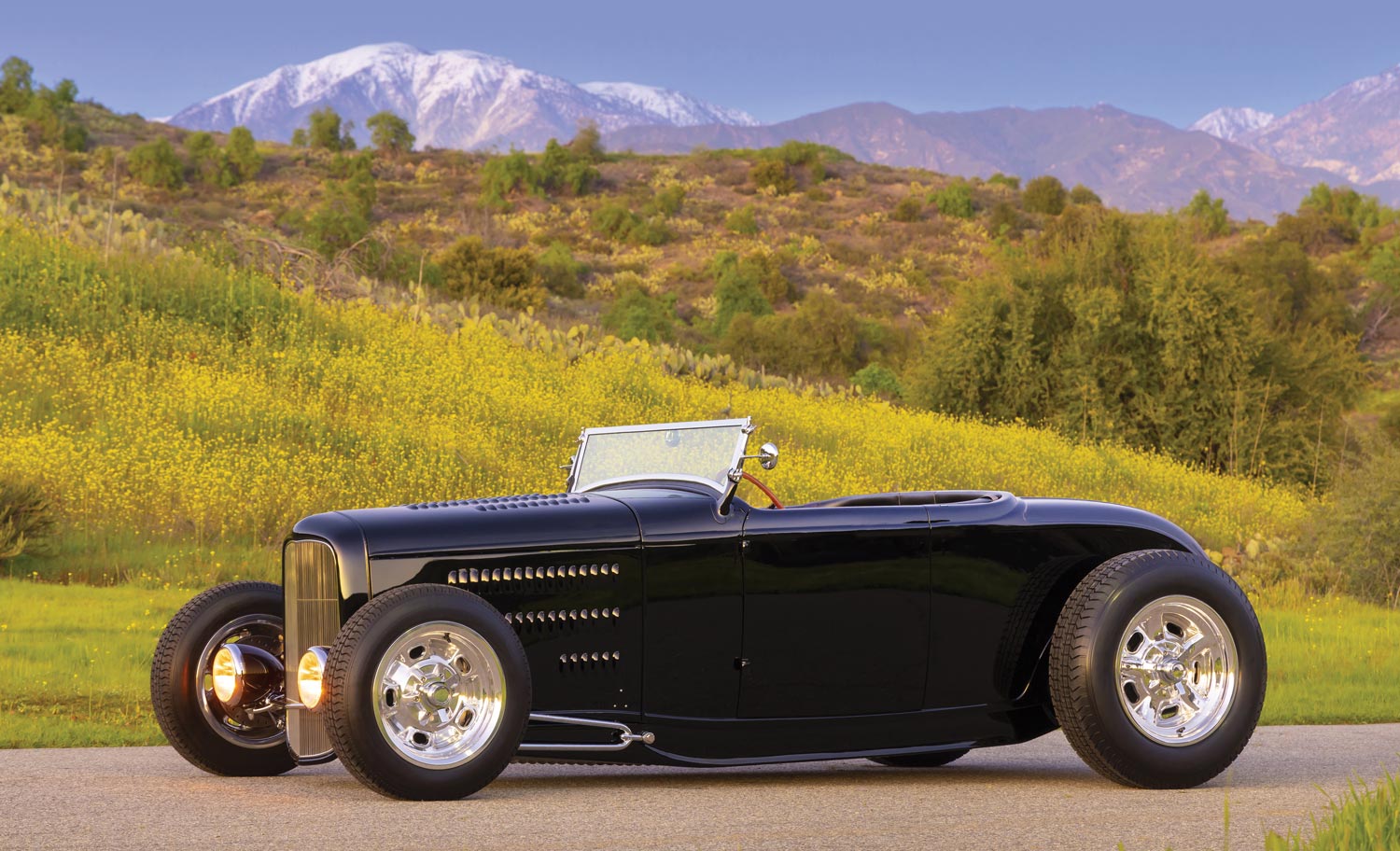
For a hot rod that has undergone significant modifications it is conspicuous to see that Jack began with an original ’32 Ford frame. At this point Jack and Hagy teamed up to wholeheartedly modify the frame and work their collective magic. The front and rear of the frame is stepped while in back there is a two-piece hoop that allows for the rearend to be removed and replaced.

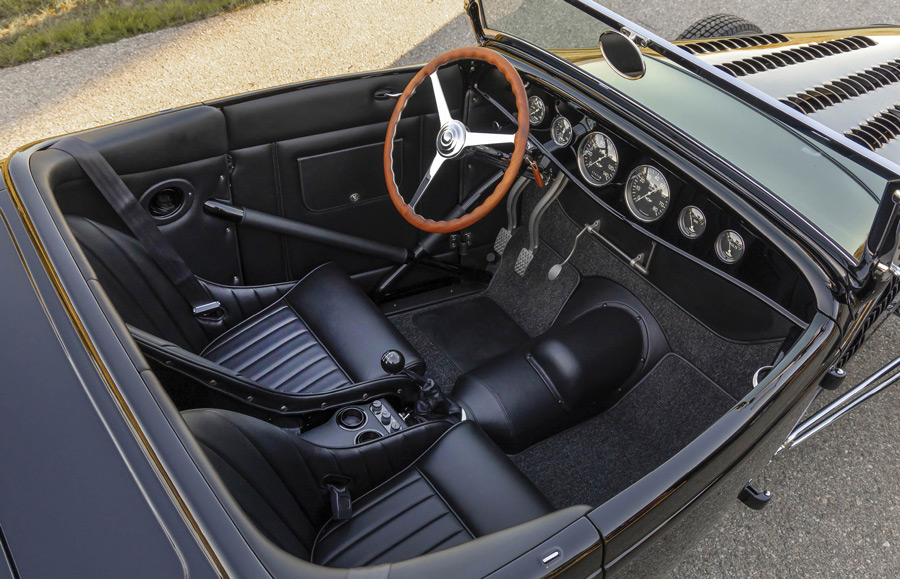
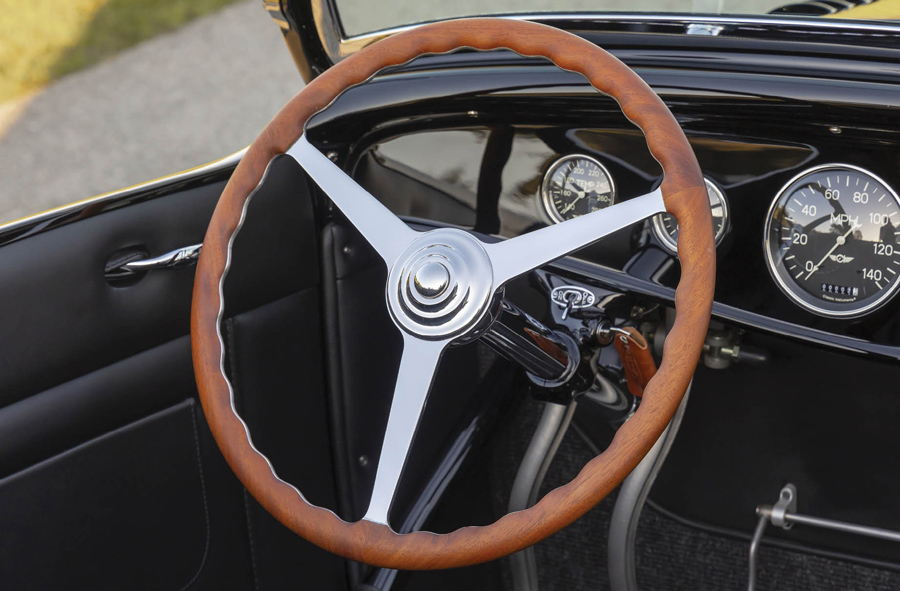
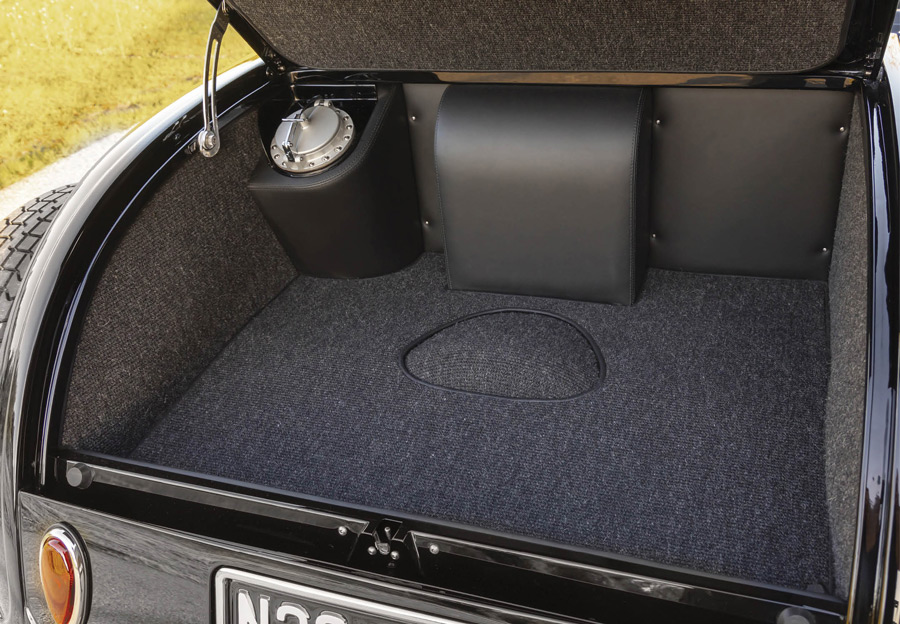
The front suspension is based on a ’37 Ford tube axle, a front longitudinal torsion bar coupled with a torsion bar arm shackle and mount integrated into the top of the kingpin. From here the hairpin radius rods were fabricated by Jack and Hagy. In the back the transverse torsion bars come from Moal Coachbuilders with the front and rear torsion bar arms machined by Gates. A pair of ’33 Ford spindles are used along with Carrera adjustable race shocks and a front antiroll bar. Steering is true modern era hot rodding by way of an OEM Vega-steering box. In back there is a Winter’s as-cast quick-change and axles matched to the torsion bar and a pinion-mounted Watts link. Bowler Performance Transmissions prepped a TREMEC five-speed now featuring a low-profile aluminum machined top cover and run through its gears by a modified Hurst shifter. The clutch package, residing within a custom bellhousing with an incorporated Tilton starter, is based on a McLeod twin-disc system mated to a custom flywheel machined by Andrew Riviera of the Vintage Air machine shop. From here the power is moved rearward to the Winters Champ quick-change that sports a 4.36 gear. Can you say “hang on”!

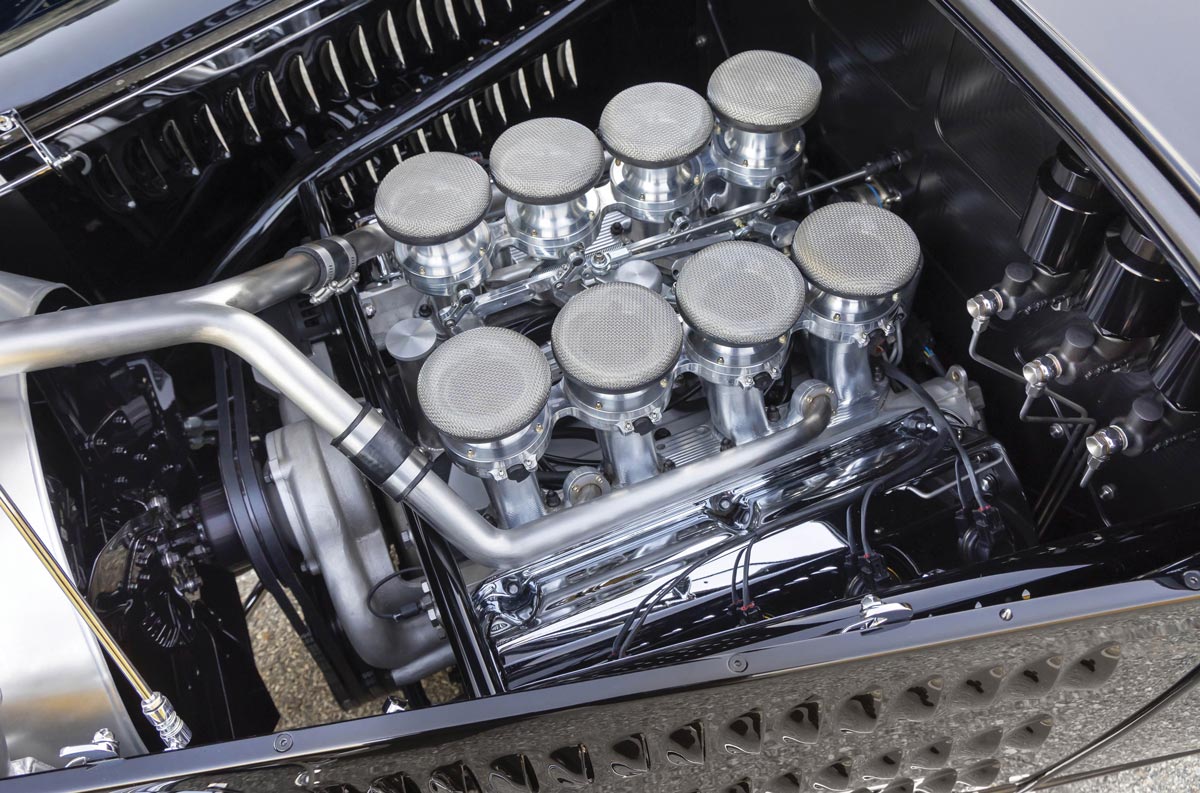
The body is one more piece of history in that it too is original ’32 Ford roadster sheetmetal. From here the modifications began, such as the removal of the stock firewall and then replaced with a machined aluminum ’wall. The rear wheel openings were filled to more closely match the shape and gap required by the vintage wheels and tires. The rear roll pan is once again Detmer handiwork. The cowl vent was filled while the license plate was frenched into the rear lower deck panel, as are the ’39 Ford taillights. From here the hand-fabricated aluminum hood was hammered out by Hagy with the initial bodywork massaged by Craig Naff and Hagy himself. The finished body- and paintwork fell to Darryl Hollenbeck of Vintage Color Studio who used a PPG toner black to achieve the “deep” finish.
